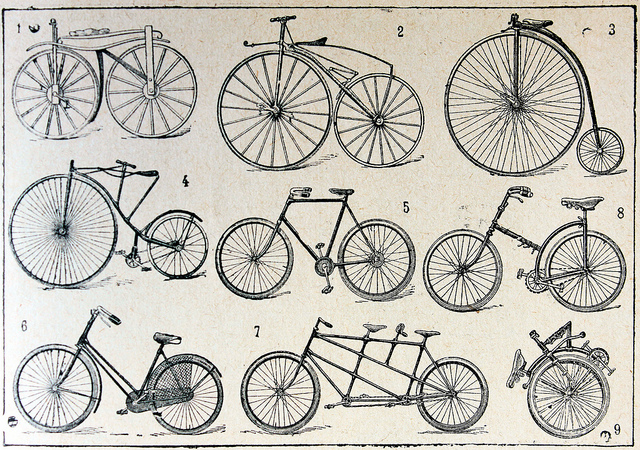Store Your Bicycle for the Long-Haul

Proper storage prolongs the life of lawnmowers, snow-throwers, and other gas-powered machines, but do bicycles need the same kind of care when stored? The answer depends on what type of bike you’re storing, in part, but most two-wheelers benefit from some routine preparations.
Like other machines, bicycles perform best when they are kept in regular service. They are not designed to sit idle, which can actually cause problems over time. Considering the investment at stake – some bikes cost thousands – taking proper care of bicycles is more important than ever.
Choosing Storage Locations for Bikes
Modern bicycles are made of various materials, including alloys, carbon-fiber, aluminum, and plastic. While bikes contain less metal than ever before, they still require dry storage conditions. In fact, before stowing your bicycle for the long-term, remove the seat post and turn the frame upside down. That way, any moisture trapped in your seat post tube is released before it starts corroding your bike’s frame.
Excessive temperatures, on either end of the scale, provide additional threats to bicycle well-being. Plastic, fiberglass, and other materials are compromised at extreme ends of the temperature scale, causing them to lose strength and become brittle. Impacts are not always seen immediately either; some bike parts get weakened by high or low temperatures, only to break-down later. Ideally, the location chosen for bike storage maintains relatively stable temperatures and humidity levels. Less-traveled areas are also preferred over high-traffic locations, reducing the potential for accidental damage to stored bikes.
Lubricate Metal Parts for Storage
Before putting-up your bike for extended storage, examine its bearings, cables and the main drive chain. These metal parts are subject to flash oxidization, which can set-in very quickly. Make sure bearing races are well-packed with grease, and always oil bike chains prior to storing them.
Brake systems rely on braided metal cables to pull calipers together, stopping bikes. Even within their protective sleeves, brake cables are prone to rust. Spray-in lubrication, or graphite in some cases, are used to keep cables moving smoothly as brakes are applied. Wheel hubs, pedals and shift mechanisms should also be oiled before storing bikes.
Relieve Tension
Bikes use spring-loaded mechanisms to operate key systems. Brakes, shifters and gear levers use opposing forces to function, but leaving tension in-place during storage eventually has a negative impact, reducing springs’ ability to bounce back. Bikes stored for long periods of time should have these systems disengaged before they are stowed. Move your drive chain to the smallest front and rear sprockets, or lift it off the cogs altogether, to eliminate tension on the derailleur.
Bicycle tires lose air over time, so unless you’ll be topping them up during the storage period, tires should be removed. If allowed to go flat while bikes sit, tires are prone to flat-spots and sidewall cracks.
Hang Bikes at Your Own Risk
Bicycle wheel rim materials range from heavy chrome plated steel to ultra-light carbon-fiber materials. The integrity of certain wheels is placed in jeopardy when bikes are hung upside-down from the ceiling, on hooks. Extended storage in this position causes wheels to warp and take-on oval shapes. As a result, hanging bikes from their wheels is not recommended. If storage limitations require you to use this method, plan to have your wheels trued by a professional before using the bike.
Better hanging alternatives include special wall-mounted racks, which support bikes from their frames, keeping weight off wheels.
Ensure a trouble-free biking season-after-season by storing your bike in the proper environment, and sticking to a few easy long-term storage preparation techniques.
photo credit: El Bibliomata via photopin cc